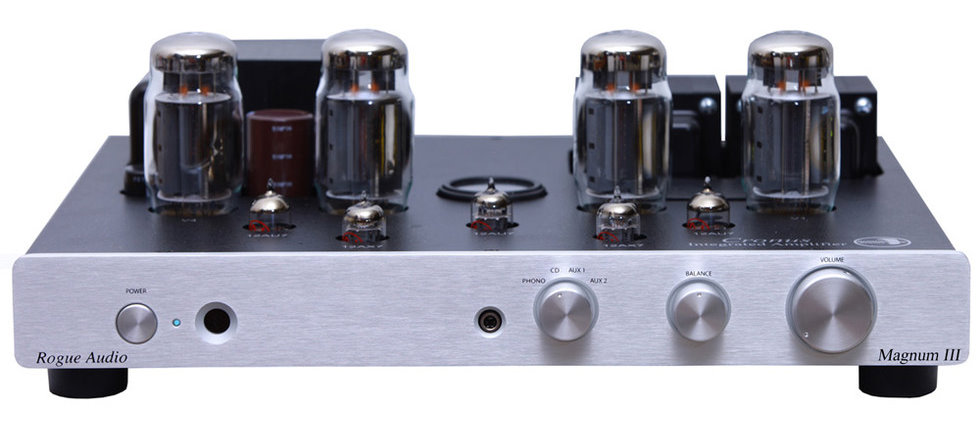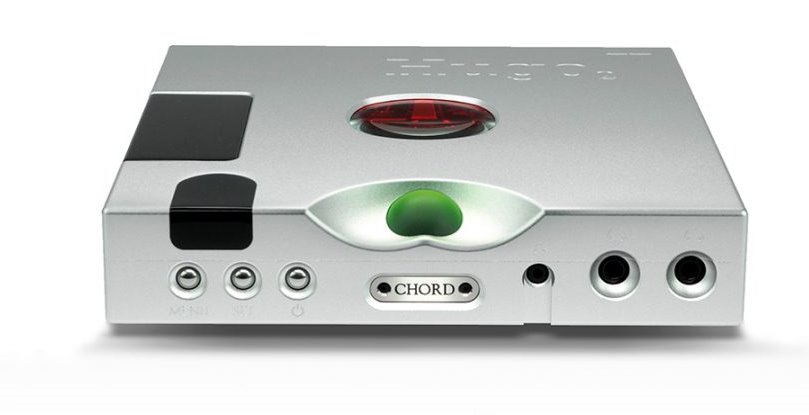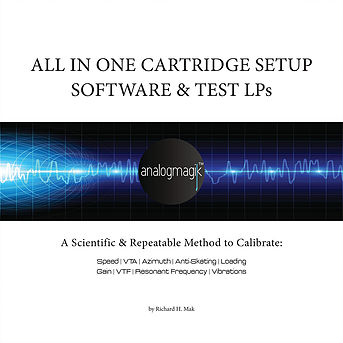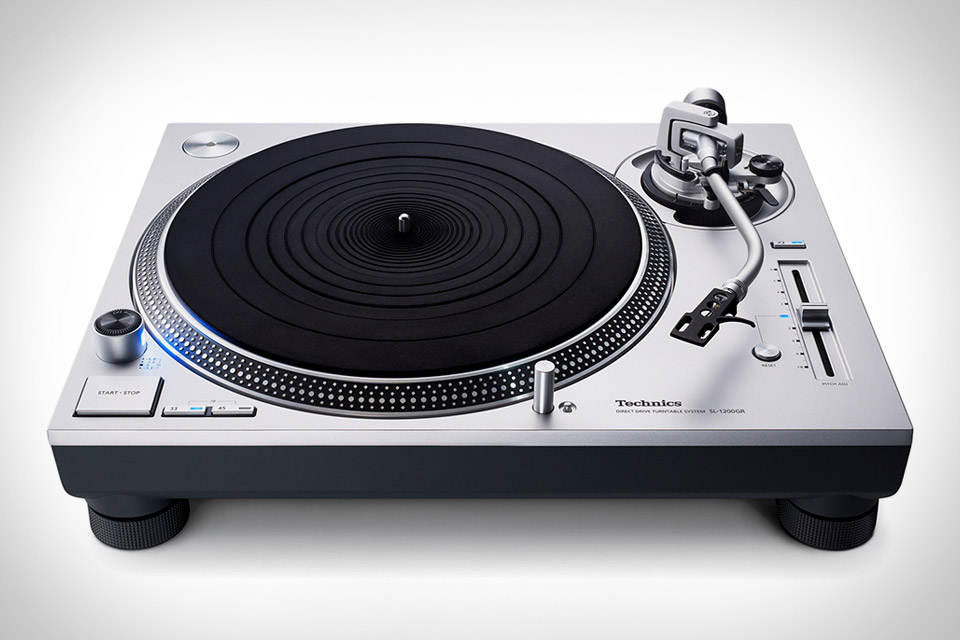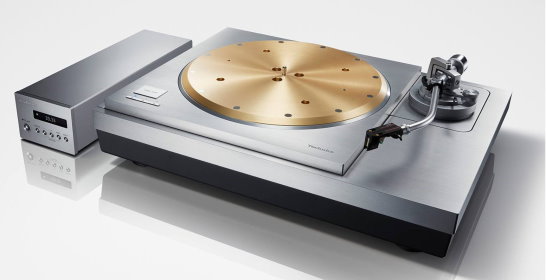- AUDIO ONE-TO-ONE Call Now: 210-805-9927
- Contact
- Register
- My Account
SoundBites Spring 2019

SPRING 2019
Join us for a tour of the latest exciting arrivals!
We also debut a new article, Analog Accessories which features a roundup of great options to improve the sound of your turntable
MAGICO - We are incredibly excited to have been chosen to represent one of the premier loudspeaker manufacturers in the world today. MAGICO loudspeakers feature an impressive array of esoteric materials and advanced manufacturing processes to craft speakers that are both incredibly accurate and immensely involving on an emotional level.
I have yet to hear a speaker that captures more of the subtly and nuance of the recording while at the same time conveying the intent and emotion of the music.
Simply put, MAGICO speakers communicate the musical event without addition or subtraction of information – exactly what a speaker should do.
Please visit Our Featured Product Page for a full overview and my thoughts about these stunning loudspeakers. Better yet, call us to arrange for a personal demonstration!
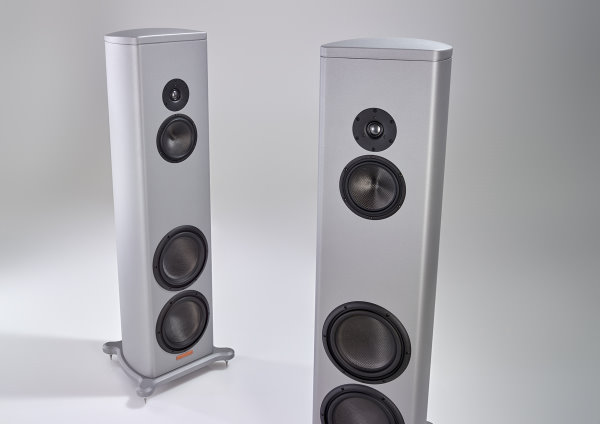
JEFF ROWLAND DESIGNS - Complimenting our Magico S3 Mk 2 speakers is a Rowland signal chain consisting of their 925 monoblock power amplifiers, Corus preamplifier with the companion PSU SuperCap power supply and the brand new, hotly anticipated, Conductor phono preamplifier.
Shortly after bringing in the Magico line we felt their companion system deserved a bit of an upgrade. What started as a moderate refresh ballooned into a total remake. You know how that works, right - one thing led to another, and another, and another - typical audiophile modus operandi! Anyway, we're super happy with the results. I mention the system changes as an introduction to the new Conductor phono preamplifier.
Jeff Rowland has long been a dyed-in-the-wool analog fanatic, so vinyl fans have waited, somewhat impatiently, for a dedicated phono preamp from The Man. With Jeff's perfectionist's mindset, this was not a project that would be rushed to market - "there will be no wine until it's time."
It's time!
The Conductor is unique in design. The chassis can accommodate up to four modules (either MM or MC) allowing the user to configure it for their specific needs. Most users will populate the unit with a single module, audiophiles with both MM and MC cartridges, or those with multiple tonearms, can install the number and type of modules needed.
The Conductor goes for $9800 with one module. It can be purchased sans power supply (deduct $900) for connection to the SuperCap PSU (if you have one for your Rowland Corus preamplifier or Rowland Aeris DAC or just want to max out the Conductor). There are some additional options, so best to give us a call so we can help you find the right configuration for your needs.
The Conductor rolled in here a few weeks back, and even though we're on a break-in cycle with the unit, it sounds terrific! The "sound" is typical Rowland, which is to say, it doesn't have a discernable character. There is no "house sound" or "sonic flavor" to describe the brand, Rowland gear simply amplifies and passes the signal without adding a signature of its own. IMO, that's the ideal (especially so with a phono preamp). As per usual with Rowland, there is absolute silence - not a hint of noise intrudes to mask subtle detail. You'll hear to the very core of the recording, amplifying everything the cartridge can pull out of the grooves.
Typical Rowland construction quality - audio jewelry, outside and inside.
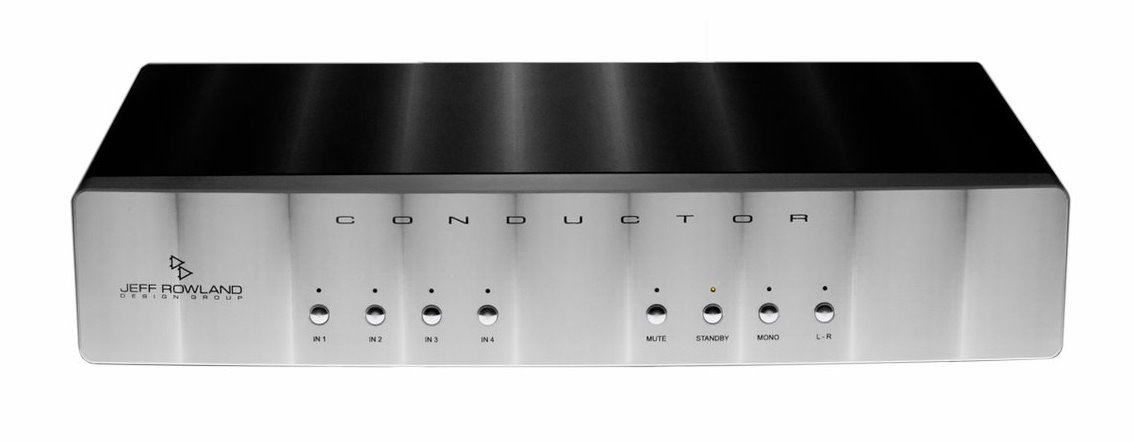
ROGUE AUDIO - The ever-popular full-tube integrated amplifier, the Cronus Magnum, has undergone a significant upgrade!
The outgoing, model II, was an outstanding product offering fantastic performance, exceptional reliability, and remarkable value. So how could Rogue improve on that?
One of the most exciting upgrades is the ability to operate the CM3 in Triode mode. An external switch selects between ultra-linear (100WPC) and triode (60WPC) operation allowing the listener to enjoy the qualities and characteristics of each mode without powering down. The CM3 also sports an entirely new phono section that can now accommodate low output cartridges. It features new ultra-low noise circuitry and now offers user-adjustable loading and selectable gain (44 dB or 58 dB).
The headphone amplifier is also entirely new and is a direct derivative of Rogue’s award-winning RH-5 headphone amp. The new design is much more comprehensive and features MOSFET buffers on the outputs. Along with significantly enhanced performance, the robust new design will drive even the most demanding headphones. Line level circuitry has also been improved and now features a super low noise floor and better overall sonics.
We love the Cronus Magnum, have for years, so I was somewhat skeptical that Rogue could significantly improve it. The result of their work did not bring about a radical change - and that's good - instead the upgrades are evolutionary and further add to the appeal of this great sounding piece of kit. Buy it! $2995
CHORD - Several exciting new products from Chord to talk about. The ever-inventive folks at Chord have struck another chord (sorry!) with the Qutest DAC, Hugo M-Scaler and Hugo TT2 DAC.
The Qutest DAC is Chord's most cost-effective option, coming in at $1895. The diminutive Qutest features beautifully machined casework hewn from a solid billet of aircraft aluminum. As they say, good things come in small packages, and that is indeed the case here! This fantastic piece employs the renowned Chord FPGA technology along with proprietary user-selectable frequency-shaping filters that imbues the little guy with a satisfying mix of resolution and listenability.
IMO, the best sounding DAC I've heard at the price point.
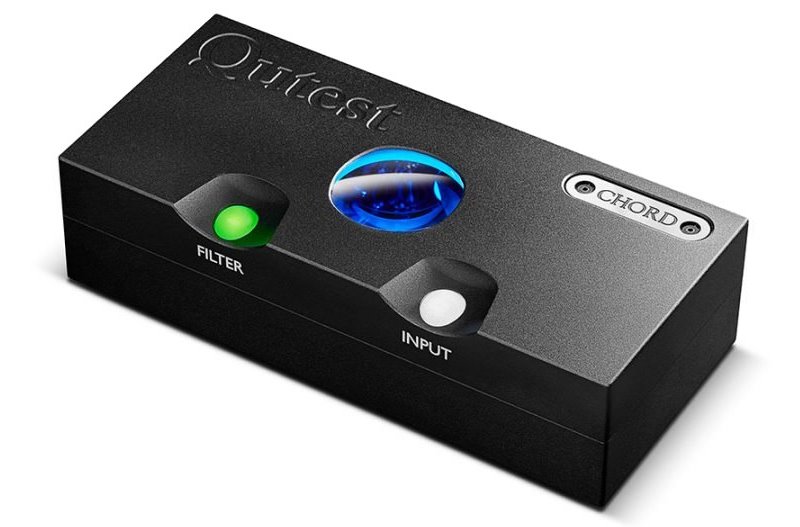
Next up, the Hugo M-Scaler, is a highly advanced standalone upscaler capable of redefining sound quality from digital audio. It uses Rob Watts’ (Chord's Digital Design Consultant’s) unique filter technology, the most advanced in the world, to upscale standard 44.1kHz digital audio up to 705.6kHz (16x CD’s 44.1kHz native resolution), ready to be passed to a suitable DAC; Hugo M Scaler extends its upscaling performance to 768kHz (from 96kHz input data) for our dual-BNC-input DACs: DAVE, Qutest and the new Hugo TT 2.
The Hugo M Scaler brings the unrivaled advantages of our ground-breaking FPGA-based WTA (Watts Transient Alignment) filtering technology to digitally connected audio devices, dramatically improving sound quality. Although optimized for use with selected Chord Electronics DACs (for the maximum 768kHz upscaling/decoding benefit), the Hugo M Scaler can be used with other DACs with suitable inputs, offering increased resolution up to their decoding capability.
Historically, I have not been a fan of upsampling digital technology. The Chord Blu Mk II changed my mind with it's upscaling (different from upsampling) technology is very impressive. Chord's upscaling technology dramatically improve resolution without adding digital artifacts (which was the case with upsampling). The results are enhanced timbral accuracy, low-frequency extension, and ambiance retrieval. Virtually the same sonic advantages offered by the Blu can be enjoyed with the addition of the M Scaler to your system. Recommended? Absolutely! Chord M-Scaler - $4995
From Soundstage! Australia: "When it comes to self-contained digital components designed to take the medium in its fundamental form to a higher plane, there are very few options. First, to mind are dCS’, Esoteric’s and MSB Technology’s superb re-clocking and upsampling components (there are others, I’m sure), all of which, I’m confident, perform exceptionally. The Hugo M Scaler joins that category of product but offers a different approach.
For starters, its price-of-admission is significantly lower, and while its chassis may be comparatively diminutive, it’s built to extremely high standards. The Hugo M Scaler doesn’t re-clock, per se, but it controls the signal via unique proprietary WTA algorithms that place it at the leading edge of digital manipulation. What’s more, it offers a robust features list while also allowing for the development of future functions activation leading to operational continuity within a Chord Electronics digital universe.
For all of those reasons, but most importantly for its undeniable sonic enhancement of tonal and low-end foundations of your digital signal chain, I have to give the Chord Electronics Hugo M Scaler Award-winning and enthusiastic recommendation. While it may require a minor readjustment to accept yet another device into the signal chain, there’s no denying the performance payoff more than justifies it. Here at SoundStage! Australia HQ, the Hugo M Scaler is a certified keeper.
To quote the Zep lads once again, this is the time to “change the road you’re on.” Snub at your own musical-enjoyment peril…" - Edgar Kramer
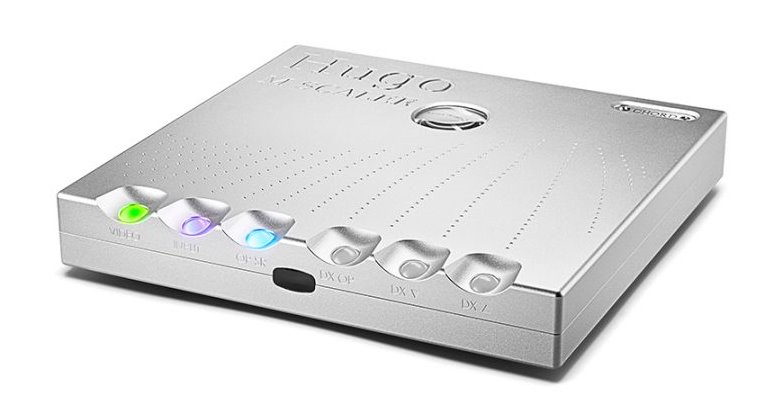
To partner the Hugo M-Scaler Hugo, or used as a stand-alone DAC, Chord introduces the Hugo TT2. TT 2 has been radically redesigned from the ground up, not only with beautiful new casework by Chief Designer, John Franks but with 5x the processing power of the original Hugo TT and double that of the multi-award-winning Hugo 2. Hugo TT 2 distills over 20 years of digital development by Rob Watts and takes advantage of the very latest technology.
As expected, it delivers radically improved technical specifications and measurements across the board and exhibits drastic sonic benefits over its predecessor with 768kHz PCM and DSD 512 playback. Hugo TT 2 sets a new benchmark in tabletop audio, only being eclipsed by DAVE.
Delving deeper, in comparison to the 256-tap filters that traditional chip DACs may run at, Hugo TT 2’s beating heart is a powerful Xilinx Artix 7 FPGA, custom-coded by Chord Electronics’ Rob Watts, with 86x 208MHz cores running in parallel to create an advanced 16FS WTA 1 filter with 98,304-taps. Double that of its multi-award winning transportable brother, Hugo 2 (49,152). Hugo TT 2 also benefits from an upgrade from a 4-element design to a 10-element design, which works in harmony with the radically upgraded FPGA and code to deliver unrivaled audio.
A brand new high-power discreet output stage coupled with second-order noise-shaping integrated between the DAC output and filter is also employed to reduce distortion massively. Further improvements have also been made to the power delivery. Hugo TT 2 eschews the Li-Po battery power supply of the original and ushers in six supercapacitors capable of delivering huge, linear dynamic currents when the music demands it with a peak output of 5A, 9.3V RMS.
Hugo TT 2 also brings home the much loved four-stage user-selectable filter controls introduced with Hugo 2 and retains the three-stage user-selectable digital crossfeed function for headphone users who want to improve the perception of depth, similar to that of speakers. Hugo TT 2 - $5795
AUDIO TECHNICA - A few months back the Audio Technica rep dropped in. He was interested in having us represent the line, and although I handle a fairly broad range of cartridges, I'm always open to new options. His offering was the new, and very unique. ART1000, which is unlike any other MC cartridge on the planet. The AT-ART1000 (“ART” for Audio-Technica Reference Transducer) is Audio-Technica’s new flagship phono cartridge. Handmade in Japan, the AT-ART1000 introduces an innovative, audiophile design heretofore unseen in mass-produced cartridges. The cartridge’s Direct Power System places the dual moving coil directly on top of the stylus tip, ensuring that the audio quality does not suffer the negative effects normally introduced by the cantilever's length and material type. Having the coils move in such proximity to the stylus tip allows the cartridge to vividly render even the subtlest sonic details and provide unsurpassed transient response. I can vouch for their claim to incredible transient response, the ART1000 is, without a doubt, one of the most dynamic cartridges I've experienced... WOW! ART1000 - $4995
The Ear: "High-end cartridges often end up being super refined, polished and tonally charming at the expense of transparency and immediacy, which means that they have coloration that benefits some recordings more than others. The ART1000 is tonally neutral, truly wideband and uncannily transparent, it doesn’t do this by tweaking the response in the upper midrange to give a strong sense of detail as can often be the case, but by employing technological advantage. I suspect that the engineering in this cartridge is so inherently expensive that it will never be trickled down to more affordable strata, but one can live in hope. At this stage the ART1000 deserves to be alarming the makers of big money cartridges, it’s one of the best in the business. I only hope that the lack of a boutique brand doesn’t stop people from finding out just how incredibly good it is." - Jason Kennedy
Stereophile Class A: "Audio-Technica describes their new flagship, the moving-coil AT-ART1000, as a Direct Power System design: its moving coils are attached to the front of its cantilever, directly above the stylus—not to the inside end of the cantilever, as in most MCs. Thus does the AT-ART1000 carry the torch first lit by the coveted Neumann DST 62 pickup of 1962—and thus does it ensure that every deflection of the playback stylus results in a proportional change in signal amplitude, theoretically resulting in the lowest possible degree of compression of all phono cartridges. Sure enough, MF observed from the low-output (0.2mV) AT-ART1000 "microdynamic expression [that] was phenomenal: small shifts of emphasis in the strumming and drumming were clearly delineated." Mikey also praised the AT as "one of the most tonally neutral cartridges I've heard," concluding that, "If you can afford it, you need it!" (Vol.39 No.10)"
Stereophile: "Best of all was the performance I heard when I used the Audio-Technica to play Jacques Loussier's Play Bach No.1 (Decca/Speakers Corner SSL 40.500). No other cartridge of my experience offers a better idea of the pitches and rhythms of Pierre Michelot's double-bass lines in the Prelude 1. The A-T's brilliantly drawn dynamic contrasts made all of the instruments in the trio sound dramatic and lifelike, and none more so than Christian Garros's drums, which enter so faintly that, with other cartridges, they at first sound like surface noise. But with the AT-ART1000, every sound Garros made was musical—and impactful, and vital." - Art Dudley
Analog Planet: "The ART1000 is manufactured in a small corner of the Machida City factory where one well-trained woman is responsible for the nearly impossible task of assembling the special cartridge." - Michael Fremer
Australian HiFi: "One of the best sounds I heard at High End 2016 was in the Audio-Technica room: The new ART1000 moving-coil turns the tables (so to speak) by placing the coils directly above the stylus, which makes tracking force critical (see close-up image below). But in a Vertere turntable with FM Acoustics amplification and PMC speakers, the sense of immediacy was spectacular, as one might hope from an A$7,999 ($4995 USD) cartridge." - Jason Kennedy
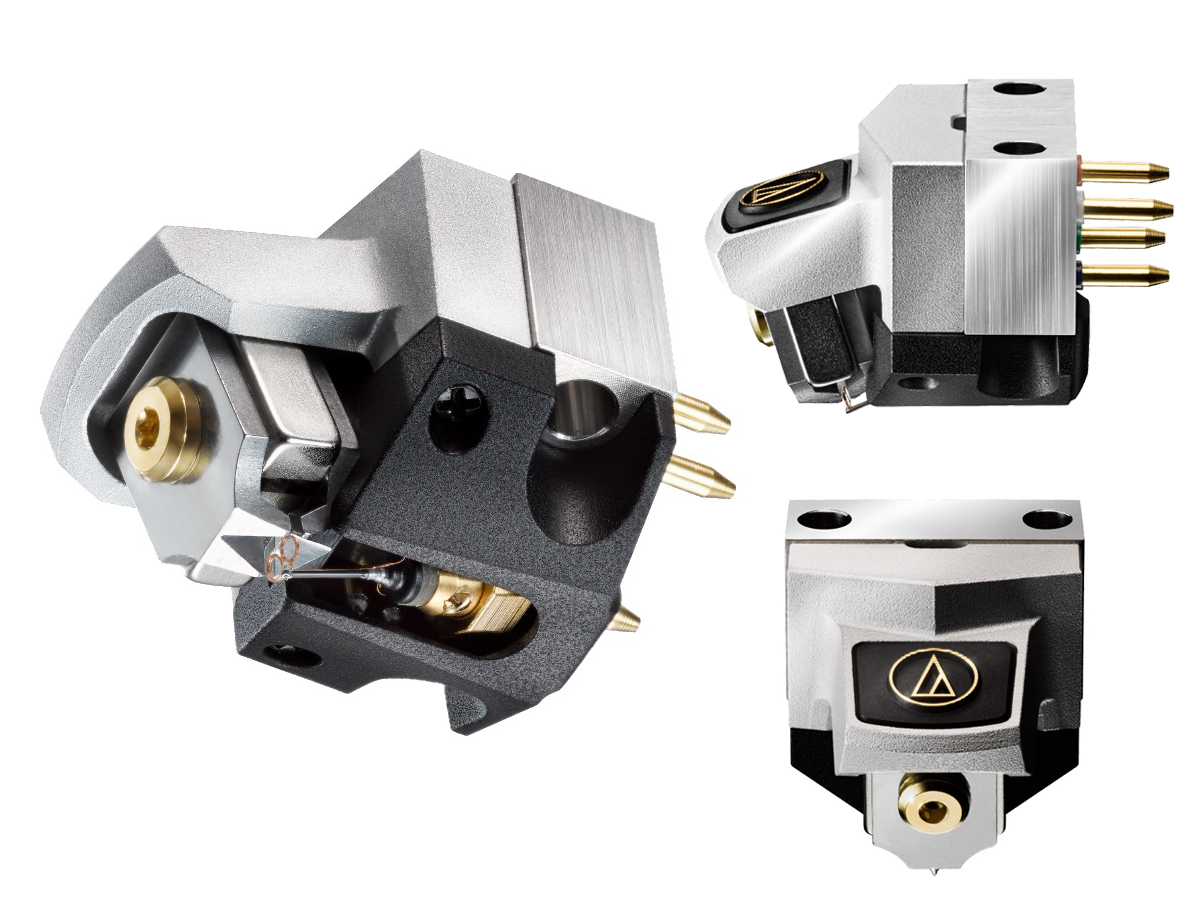
AURENDER: The new Aurender A100 Caching Music Server with internal MQA Certified DAC has just arrived. The A100 is the little brother to the A10 which has become one of the most popular Aurender models.
With the A100 you simplify your system with one less component, one less digital cable, and one less power cord by combing the DAC and music server into a single chassis. The Aurender A100 does just that, marrying their outstanding music server technology with an equally impressive internal MQA-Certified DAC. The built-in volume control allows one to drive a power amp directly, allowing you to bypass a preamplifier if you like.
With 2TB of internal hard disk drive and one 120GB solid-state drive cache for playback (an Aurender unique feature that improves performance), the A100 is the perfect solution for those replacing CD Players. The dedicated Aurender Conductor App (which controls all Aurender models) has been hailed by reviewers and users worldwide for its performance and intuitive operation. The iPad App was developed in house with managing large music databases in mind, providing exceptionally fast browsing and searching of your favorite music. All Aurender Servers and Players fully support the service. The Conductor app easily integrates music stored locally on the A100's hard drive, on an external USB stick or hard drive, a NAS drive and TIDAL and Qobuz music streaming services. You can build playlists containing files from all those sources, and the Aurender plays them seamlessly. You can also access internet radio stations around the world.
In today's world of server/streamers, the Aurender products reign supreme.
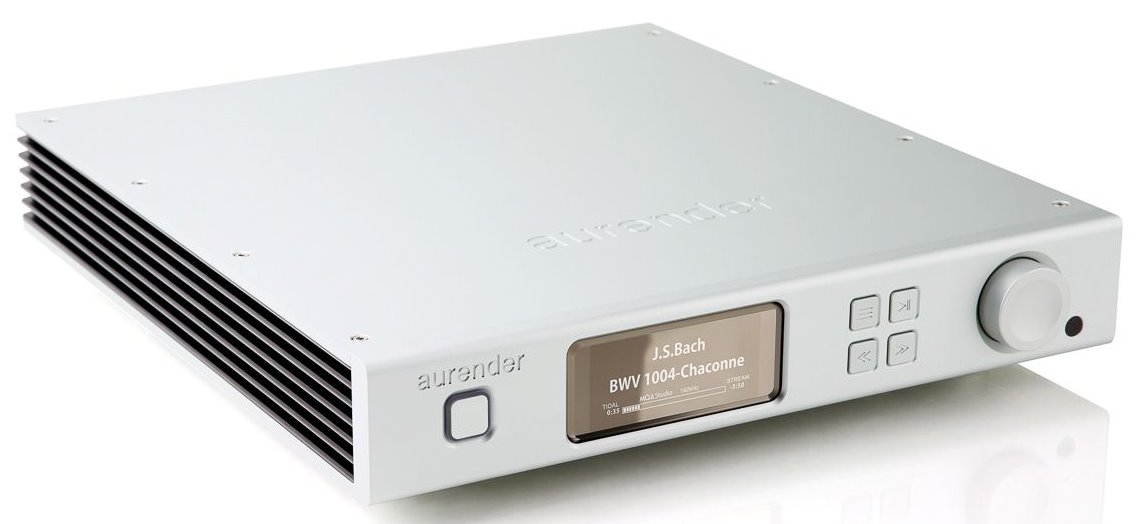
FEATURES:
120GB SSD storage for caching playback
2TB of internal HDD storage
Full-Linear power supply
Unbalanced (RCA) Audio Outputs
768KHz/32bit Next Generation Flagship AK4490 DAC Chip
DACs with Discrete Linear Power Regulator
Volume adjustment from the app, IR remote or front panel rotary control
TIDAL Streaming (MQA rendering with Masters files) supported within Aurender Conductor
QOBUZ Lossless Streaming of High-Resolution Content
Internet Radio
Dedicated USB Audio Output with Ultra-Low-Noise Power Circuitry
Award-wining Aurender Conductor App for ease and convenience
FPGA-based Precision Data Reclocking System with sub 100fs world-class jitter-
reducing clock generator
Three Individual Toroidal Power Transformers for Server / Digital / DACs
Support for Network Attached (NAS) and USB Storage
Remote Technical Support via Aurender Conductor App
Smart Copy feature allows for easy transfer of music libraries
Aurender A100 - $3895
ANALOG MAGIK - A while back I learned about a revolutionary software-based cartridge optimization system from Germany. AnalogMagik is a Windows-based turntable/cartridge calibration software suite (and accompanying test LPs) designed by Richard H. Mak and a team of engineers. It offers a scientific and repeatable method of calibrating every cartridge setup parameter.
After you have performed a basic alignment on your turntable's cartridge using an appropriate alignment protractor (we recommend the SmartTractor or Feickert, purchased separately), the software and test LPs will help you optimize and fine-tune all setup parameters to achieve a more accurate analog cartridge setup. Following the onscreen instructions, the program guides you through all the test functions, tells you what "optimal" numbers to look for, and what cartridge adjustments you need to make to get there.
AudioMagik believes that the optimum setting for any parameter will be achieved when the measured distortion is at its lowest point. The on-screen readout shows you - in real time - how adjustments setup affects distortion. So, fine-tuning anti-skating, for example, is done by tweaking the applied force until the distortion is at it's lowest point. Bingo! No more guessing about whether the setting is correct, it will be spot time-consuming.
I could go on and on about how much we've enjoyed this setup technique, but I will caution that it is a very time-consuming process. We had hoped that it would speed up our turntable setups, but it had the exact opposite result. A care fine-tuning can take four hours or more. IMO, it's absolutely worth it. A dyed-in-the-wool analog fanatic will love this product but do expect to spend some time learning it and using it to dial in your rig. AnalogMagik Set-Up Software and Test LP's - $699
It works! We've set up many 'tables using this product, and the results have been amazing.
ACOUSTICAL SYSTEMS: Our latest setup toy is the Acoustical Systems cartridge alignment protractor. It was recommended to us by Analog Magik, and I'm happy they made the suggestion. The Acoustical Systems protractor is, by far, the most versatile product of its kind I have used. The SMARTractor features the critically acclaimed UNI-DIN tangential curve and an all-new tangential curve using the latest calculations. In the last 2/3 of the record's groove, the UNI-DIN curve offers significant (18-45%) less average - as well as less total! - distortion than Baerwald or Loefgren. Sonically this gives you less stress on human voices, more subtle details, less grain, increased air and considerably more headroom in critical passages, and especially so during climaxes. Acoustical System Protractor - $595
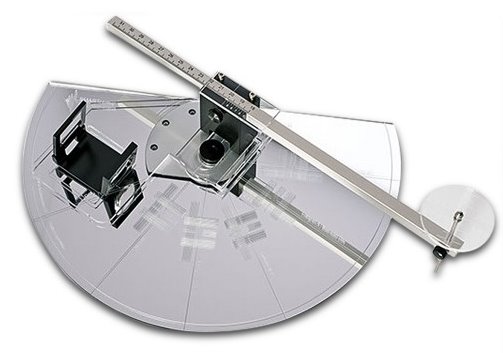
TECHNICS - The trio of turntables Technics have introduced since their re-entry into audio have been extremely popular here, dominating their respective price points, and with good reason. Handcrafted in Japan (in virtual clean room conditions), their turntables are precision instruments that are immaculately constructed and carefully inspected for tight quality control. Technics turntables are the very definition of Japanese precision and attention to detail.
The SL-1200G is a remarkable product offering amazing technology and performance at the price point. The "G" model employes Technics proprietary twin-rotor coreless direct-drive motor, an eleven-pound three-layer, hand-balanced platter and precision gimbaled tonearm with magnesium armtube all mounted on a special four-layer plinth and isolated with unique silicone isolation footers - and those are just the highlights! Frankly, there's not a more sophisticated turntable available at anywhere near the price — $4k, and worth much more.
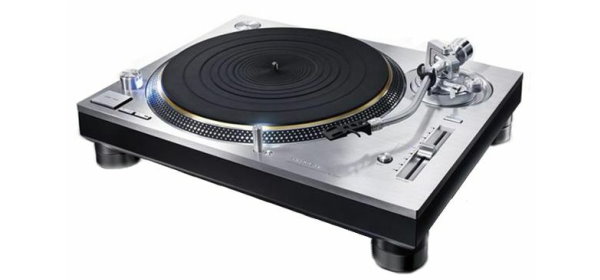

A bargain at $1695, the SL-1200GR distills the technology of the "G" model into a more affordable package. The technology is all there - coreless direct drive motor, two-layer platter, and three-layer plinth assembly, precision gimbal tonearm with an aluminum armtube. Mount an excellent cartridge (Popular here are: Ortofon Bronze, Hana E, Clearaudio Performer or Grado Platinum) and you have a world-beater for under $2500!
You can "hot rod" any of the Technics turntables by changing the headshell and mat, adding a clamp and carefully selecting external cables. Note: See our article on Analog Accessories for more details.
And now for the Big Kahuna, the top-of-the-line SL-1000R and SP-10R turntables. The SP-10R is motor and speed controller, only, allowing you to choose a plinth and tonearm of your liking. The SL-1000R is a complete, cartridge-ready, turntable that is 88 pounds of awesomeness! With technology like no other, immaculate camera-like finish and attention to detail, along with remarkable performance, the SL-1000R is a remarkable tour de force.
On our demo SL-1000R we installed the wonderful van den Hul Crimson Stradavarius MC cartridge and a set of the Wireworld Platinum Eclipse Series 8 tonearm cables and topped it all off with the new graphite mat from Oswald's Mills Audio for an absolutely killer combo!
PARASOUND: Over the last year, Parasound has introduced no less than seven new products!
For more than twenty years Parasound has been a name synonymous with unmatched value. Their electronics are respected for both performance and reliability and compete with significantly more expensive products. The company's flagship Halo line benefits from the design prowess of the legendary John Curl who has worked with Parasound as a consultant for many years. His input has greatly influenced their designs and is one of the reasons for the praise they’ve received from the audiophile community. His hand is evident in the new power amplifiers, especially the incredible JC 5.
The all-new statement JC 5 Stereo Power Amplifier is remarkable. No surprise that this John-Curl-designed beast is an excellent sounding amp, but I'm taken aback by just how this thing sings! The Halo JC-1 monoblock power amplifiers had spoiled us, but I think the JC 5 might be better!
This amplifier has power, in spades, so it will drive anything you bring it. Like the JC 1 monos, this amp can float images and reproduce low-level detail and micro-dynamics in a way few other amplifiers at this price (and power) can manage. Just look at some of the features and specs below, and you'll begin to appreciate the incredibly robust design and top-shelf componentry. Call us; you need one! Parasound P 5 - $5995
SoundStage! HI-FI January 2019: "Having heard the JC 5, I realize that it's worth every penny. Its sound delighted me in ways that few other components ever have. By any measure, the Halo JC 5 is a superb power amplifier. I can't recommend Parasound's Halo JC 5 highly enough."
HomeTheaterReview.com: Best of 2018
Hi-Fi News (UK) December 2019 - Outstanding Product Award - "This is one fast, hard-hitting amplifier with superb grip on speakers. The JC 5 will please even if you never explore the limits of its performance."
Home Theater Review November 2018: "The JC 5 plays whatever you want the way it was meant to be played. For Parasound to have such stringent design criteria on the JC 5 is impressive indeed. Like its big brother, the original JC 1, the Parasound JC 5 is a stunning amplifier."
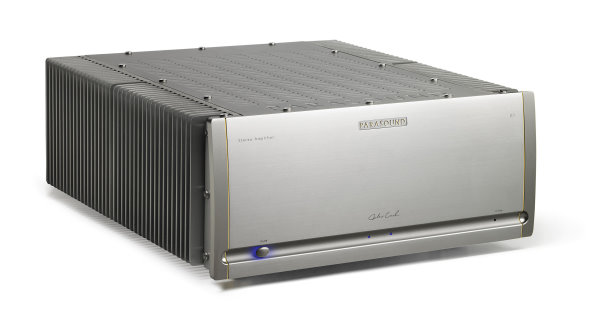
400 watts x 2 @ 8 Ω RMS, both channels driven
600 watts x 2 @ 4 Ω RMS, both channels driven
1200 watts x 1@ 8 Ω, in bridged mode
Circuitry designed by legendary John Curl
Ultra-high bias Class A/AB operation
12 watts per channel of pure Class A power
90 amperes peak current per channel
Stable with speaker impedance dips to 1.5 Ω
Balanced inputs with discrete circuits
Direct-coupled signal path, no capacitors or inductors
JFET input stage, MOSFET driver stage
24 beta-matched 15 ampere, 60 MHz bipolar output transistors
1.7 kVA shielded toroid power transformer with independent windings for each channel
Independent power supplies for left & right channel input stages, driver stages, output stages
8,880 µF Nichicon Gold Tune filter capacitors for input stages
132,000 µF Rubycon filter capacitors for output stages
The A 21+ Power Amplifier is a bruiser! Power out the wazoo to control any load while retaining the ability to reproduce the subtlety and nuance of the music. We've sold a lot of these to Magnepan owners who feel it is the best amplifier they've heard on Maggies for the price. I don't think you can find a better mix of power and finesse for $2995.
Positive Feedback: "The A 21+ represents a new unparalleled value in amplifier performance. Details like soundstage depth, focus, and texture are where the A 21+ puts real distance from the A 21. The A 21+ is exceptional and provided an awe-striking feel."
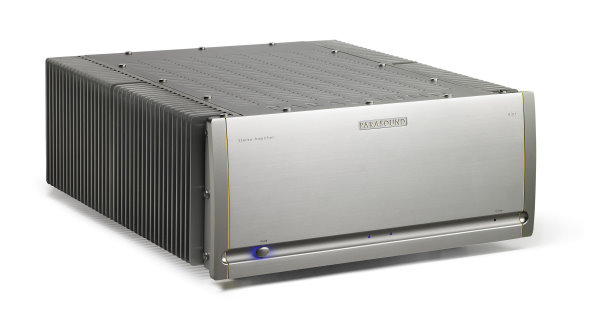
300 Watts (8Ω)
500 Watts (4Ω)
1000 Watts (bridged)
PSU Capacitance: 108,000 uF
Transformer size: 1.2 kVA → 1.3 kVA
A23+ Power Amplifier, little brother to the A21+, is a remarkable bargain - this guy is far better than it has a right to be at $1495.
Stereo+ (Norway): "Together, the Parasound P 6 and A 23+ are dynamite. Pure sonic magic with brilliant dynamics, delicious midrange and impressive resolution. To get such good sound for the price of this duo seems almost unnatural. One incredibly appealing preamp-amplifier
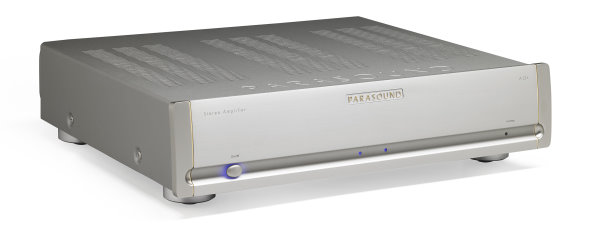
160 watts x 2 @ 8 Ω RMS, both channels driven
240 watts x 2 @ 4 Ω RMS, both channels driven
500 watts x 1 @ 8 Ω, in bridged mode
Circuitry designed by legendary John Curl
High bias Class A/AB operation
45 amperes peak current per channel
Stable with speaker impedance dips below 2 Ω
The HINT 6 Integrated was the first of the products to be introduced. Like its predecessor, the HINT 6 is an excellent mix of features and flexibility, making it a single component that can be the heart of any system. Powerful, too, the HINT 6 can drive just about any speaker you choose. Parasound HINT 6 - $2995
Stereophile February 2019: "…brilliantly detailed Parasound."
What HiFi (UK) December 2018: "This is a confident and enthusiastic amplifier that's just fun to listen to."
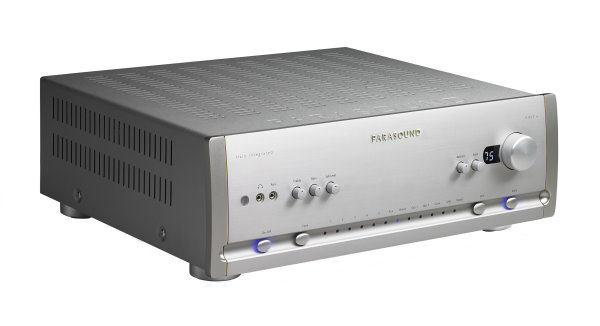
ESS Sabre32 Reference DAC (ES9018K2M)
Asynchronous USB 2.0 supports PCM up to 384kHz/32-bit
USB input decodes Native DSD64, DSD128, DSD256, and DoP DSD
Coax, and optical inputs accept PCM up to 192kHz/24-bit
Analog bass management with high & low pass crossovers
Home theater bypass input for surround sound integration
Front panel subwoofer level control
Dedicated high current headphone amplifier (TI TPA6120)
Phono input for MM, MC, and MI with 100 Ω or 47k Ω load
Front panel Aux input with automatic +12 dB gain stage
5 pairs of RCA line level Analog inputs
1 pair XLR balanced Analog input
Balanced XLR and RCA left and right preamp outputs
1 balanced XLR and 2 RCA subwoofer outputs
Bass & treble controls with relay bypass from the remote or front panel
Back-lit remote control with discrete buttons
160 Watts x 2 @ 8 Ohms (RMS, both channels driven)
240 Watts x 2 @ 4 Ohms (RMS, both channels driven)
Power amp circuit topology designed by legendary John Curl
The P 6 Preamplifier takes over where the P5 left off adding a host of upgrades and new features, including everything on the list below. Parasound P 6 - $1495
Stereo+ (Norway): "Together, the Parasound P 6 and A 23+ are dynamite. Pure sonic magic with brilliant dynamics, delicious midrange and impressive resolution. To get such good sound for the price of this duo seems almost unnatural. One incredibly appealing preamp-amplifier package from Parasound."
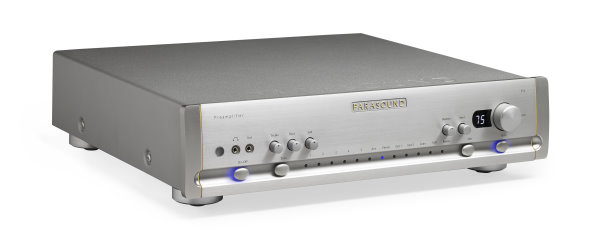
Burr-Brown analog resistor ladder volume control
Dimmable front panel volume display
Upgraded USB receiver with "plug and play" operation with Windows 10
An additional optical input (2 total)
Ball bearing supported solid aluminum volume knob
Programmable default turn on volume setting
Favorite volume memory with the remote control button
Increased phono stage gain for lower output cartridges
Improved Left/Right channel separation and balance tracking
Sandblasted metal end caps replace plastic end caps on the P 5
Updated cosmetics with subtle gold highlights
Analog Accessories
Over the past year, we’ve sampled a number of new and exciting analog-related products. Some qualify as tweaks and some I would use a stronger term to describe; indispensable! To those new findings, I’ll add some old favorites to round out the groups. Also, I’ll be preparing a separate product comparison page that can be updated as new accessories become available.
I’m grouping products into categories, making comparisons and allowing you to focus on a particular area you may want to address. Those are clamps and weight, mats, headshells, phono cables, and LP cleaning products (which will be discussed separately in another article).
I think we can all agree that our high-end audio hobby (affliction, habit, addiction, neuroses, etc.) is very subjective. What one person enjoys, irritates the next. There is/will never be one product that will please 100% of listeners. The complexity of an analog replay system further muddies the waters, making unanimity of opinion even more unlikely.
When comparing a single component, such an amplifier, preamplifier, DAC, etc., the variables are limited to external considerations; system components and the room itself. While those are exceptionally important, at least the item under consideration is a constant.
The analog playback system, on the other hand, is a particularly complex beast. Turntables are “systems” in and of themselves that employ multiple components, each interacting with one another. So many elements make up the turntable system that judging one specific part of the assemblage without considering the other constituents, is virtually impossible. Add to that the most influential variable of all, the phono cartridge, and you have a compilation of disparate elements that make consensus very, very difficult. So, with those caveats in mind, let’s wade into these treacherous waters.
Record Interface - The record interface plays a pivotal role in defining the sonic character of an analog replay system. When designing a turntable, the engineer considers the mat (or lack thereof) a key ingredient and a significant contributor to the finished product. The wide variety of turntable designs, in turn, results in a range of interfaces, from textile, leather, cork or elastomeric materials to direct contact with a bare platter, each differs in the character they impart. Changing mats can result in rather dramatic differences in virtually every sonic category including tonality, dimensionality, and dynamics, among others.
So where do we start? The first step is deciding what you like about the sound of your turntable, and considering what you might want to change or enhance. The turntable itself will narrow the choices as some mats may not be appropriate due to weight or other considerations. Within the options available, speaking with your dealer or reading reviews and other listeners experiences can further focus the search.
Ultimately, as we’ve stated, and repeat, the subjective aspect makes an absolute recommendation impossible, but I’d like to share some of the more effective products we’ve tried.
- The least expensive option is a textile mat, which felt being the most common. Rega, Linn, and others recommend felt, and each has its own blend of fibers. If you are pleased with your turntable from either of those manufacturers, stick with it, but a number of our customers have found better performance replacing the felt with other mats. If staying with felt, I recommend replacing it occasionally. A new Rega felt mat would run you $35. Call to Order
- Note: A review by Malachi Lui, writing for Analog Planet, suggested the Pro-Ject felt mat outperformed the Rega mat on his Rega turntable. I have not experimented with the Pro-Ject so I can’t comment. Call to Order
- The Funk Firm in the UK offers the Achromat. This product has been on the market for some years has a raft of loyal users. Available in both 3mm and 5mm thickness, we suggest the 5mm unless VTA (or spindle length) demands the thinner option. The Funk Firm offers an Achromat 1200 which has been dimensioned explicitly for the Technics SL-1200 Series turntables. To most ears, the Achromat 1200 will be a nice upgrade over the stock mat on their SL-1200GR and SL-1200G models. Excellent product and reasonably priced at $115. Achromat 1200
- Oswald’s Mills Audio believes graphite is an ideal material for an LP interface, and listening to their mat on our Technics SL-1000R I’d have to agree. The OMA mat adds life and light to the sound that results in improved clarity and speedier transients when compared to the stock Technics mat. The caution with the OMA mat is weight. Coming in at 1.5lbs, the OMA mat is heavy, so be sure your turntable is comfortable with the added weight. $465. OMA Grahite Turntable Mat
- A very unique and exciting interface comes from SteinMusic in Germany. Holger Stein has designed an interface utilizing a very special handmade paper from Japan that he then treats with a natural resin formulation. The result is a stiff paper with visible, irregular, fibers. Two versions are available, the Perfect Interface Signature (white in color) and Signature Carbon Signature (which is black). Both are very effective but have different sonic characters. The white has a warmer tonal balance, the black faster and more articulate. Stein Music Perfect Interface Signature is priced at $349; the Carbon Signature goes for $599. Call to Order
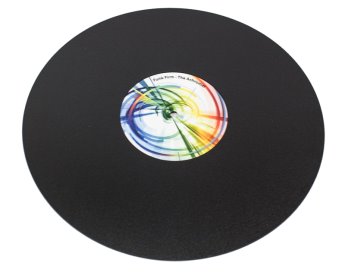
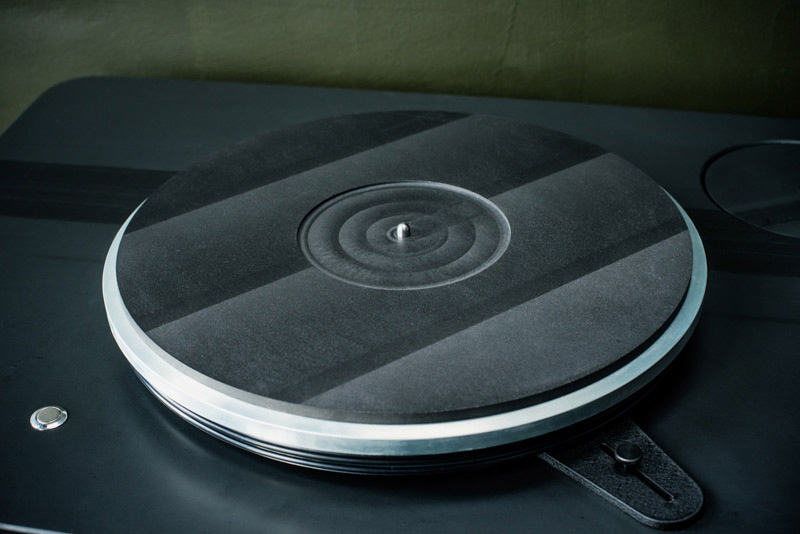
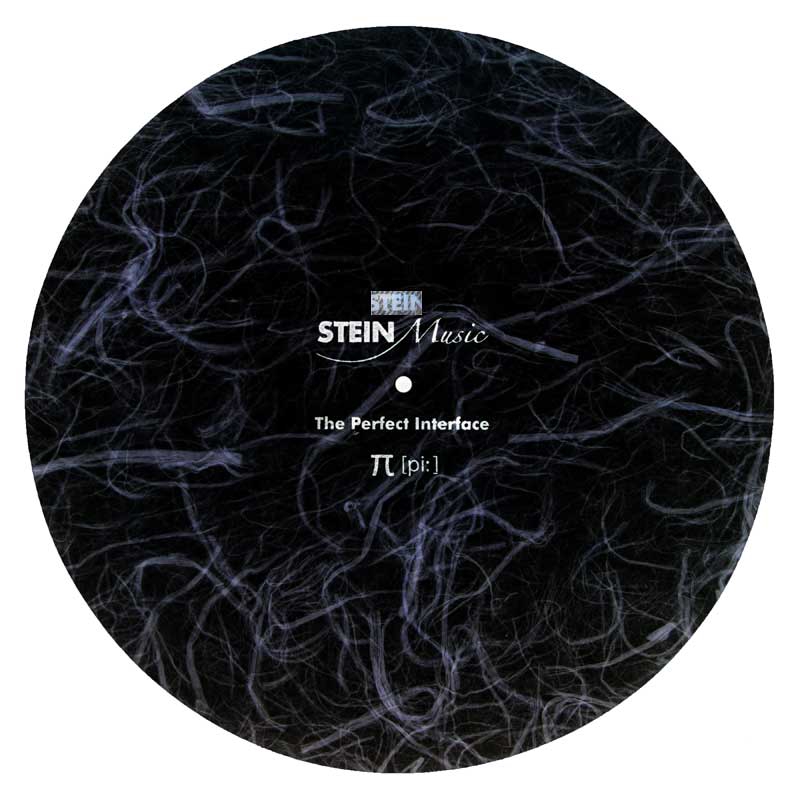
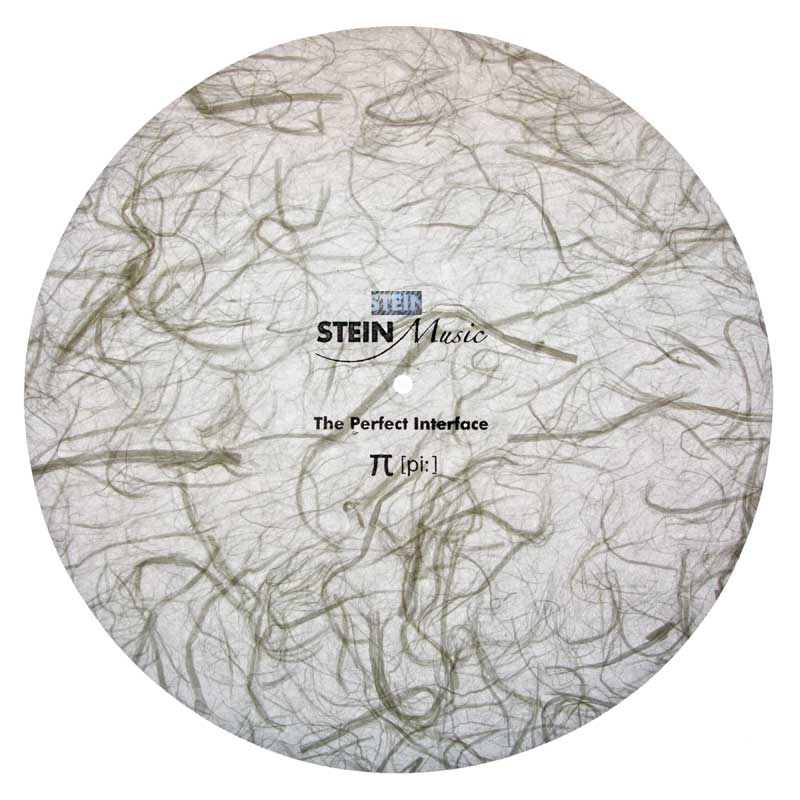
Clamps and Weights – Most every turntable can be improved by adding a record clamp or weight. Some turntable manufacturers frown on the accessory, but in virtually every case we’ve seen, listeners feel that the accessory offers a significant and worthwhile upgrade in performance.
Why use a clamp or weight? As the stylus traces the groove, vibrations are created within the vinyl. The vibrations are picked up by the cartridge and amplified along with the music. This spurious information creates a "masking" effect, reducing resolution by obscuring low-level detail. With most turntable designs, the turntable platter and/or mat is designed to funnel away and dissipate these vibrations, but to be effective, there must be an intimate bond between the record and platter. The tight coupling afforded by a good clamp or weight ensures the maximum transfer of energy occurs. The result is a cleaner, "quieter" sound with better resolution of subtle details.
Over the years we’ve tried many clamps and weights of various designs that span a wide range of prices. From simple pucks made of wood, rubber or metal, to combinations thereof, often using exotic materials and unique construction techniques. They ALL have an effect, changing the sound in one way or another. But which ones produce consistently positive results? That narrows the field rather dramatically.
Here Are Our Picks in the Clamps and Weights Category:
- In the modest price range, the KAB Super Record Grip Mk II ($38) is a good buy. The design employs a two-piece molded frame with a spring rubber insert that grips the spindle.
- Made from Delrin, the clamp from J.A. Michell is a very lightweight design that will work on most any ‘table. The price is $59. JA Michell Record Clamp
- From VPI we like their Stainless-Steel Center Weight ($150). This super-simple design is effective simply due to its weight. It’s most often used with VPI ‘tables, but it can be used on other makes as well. It’s heavy at 28oz, so be sure that your turntable is comfortable the added weight. Call to Order
- There is a big jump in price up to my next recommendation. The Basis Reflex Clamp is, in my opinion, the most beautiful record clamp available. Precisely milled from a solid billet of aluminum, the Basis Reflex Clamp is a marvel of engineering, design, and execution. Just twist the top of the clamp to lock it into place on the spindle, tightly coupling the record to the platter, rotate the opposite direction to release. Unlike record weights (and many other clamps) the reflex action grabs the spindle and pulls the clamp down tightly against the record as you twist the top part of the clamp. Ingenious and very, very effective. $595. Basis Reflex Clamp
- A product unlike all the others in this roundup, the Stillpoints LPI Ultra LP Isolator combines prodigious weight (30oz) along with patented Stillpoints vibration absorption technology. The weight of the LPI seats the record against the mat/platter, while the ring of five isolators on the bottom reduce vibration by converting mechanical energy into heat. A great product, but sure your turntable is comfortable with the added weight. $549. Stillpoints Ultra LP Isolator
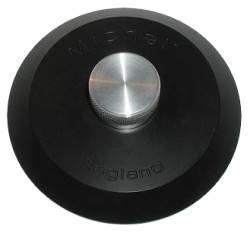
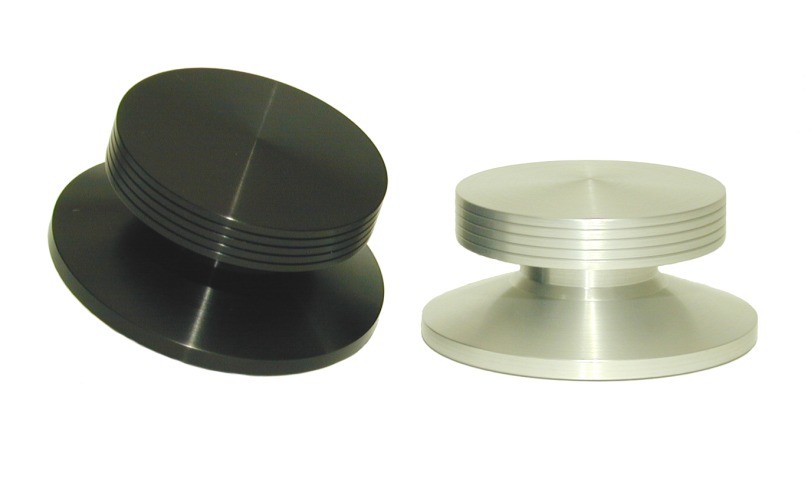
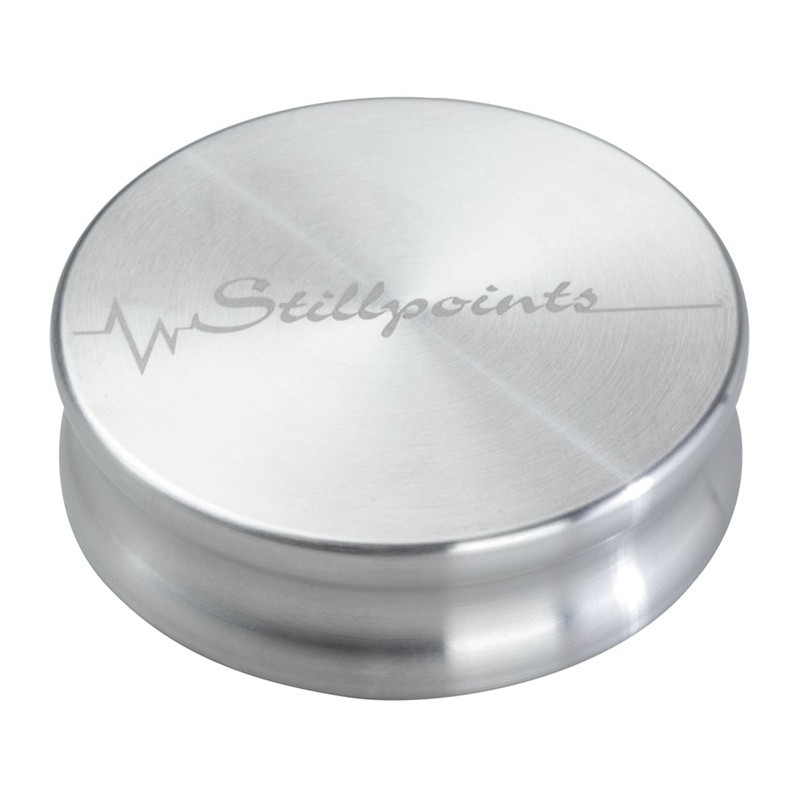
Headshells - Though most modern tonearms employ single-piece armwands, there is a resurgent interest in tonearms that utilize the so-called “universal” detachable headshell. The new Technics turntables have been wildly popular here which has spurred our interest in evaluating detachable headshells. We’ve experimented with a number and will recount our findings here, but keep in mind that our experience is limited to trials on the Technics ‘tables (SL-1200GR, SL-1200G and SL-1000R).
- Ortofon offers a range of options priced from $36 to $629. We’ve found several that offer excellent performance and value. Compared to most stock headshells (especially the lightweight headshell on the SL-1200G and GR models), the solid aluminum Ortofon LH-2000 ($89) offers a cost-effective step up performance. It’s relatively heavy though, at 15g, so be sure the total mass of the cartridge and headshell are appropriate for your tonearm. Made from carbon fiber, the LH-900 ($249) is our next pick in the Ortofon line. We’ve used this model on the SL-1200G and SL-1000R with good results. Weight is 16.8g. Call to Order
- The graphite headshell from Oswald’s Mill Audio in many ways compliments their graphite mat offering a similar sonic character – dynamic and extended. The company does not include or recommend a finger lift, but not many folks are willing to do without the convenience, so we’ve added a lightweight VPI finger lift. $465. OMA Graphite Headshell
- DS Audio, the Japanese company, noted for their outstanding optical pickups, offers the HS-001 headshell. Their unique design improves the mechanical coupling between the headshell and armtube (an obvious limitation to a detachable system). A “why didn’t someone think of this before” solution was to add a second locking pin and a special spherical washer at the mating junction. Together these features significantly enhance clamping force while ensuring uniform pressure on all the signal contacts. $450. DS Audio HS-001 Billet Headshell
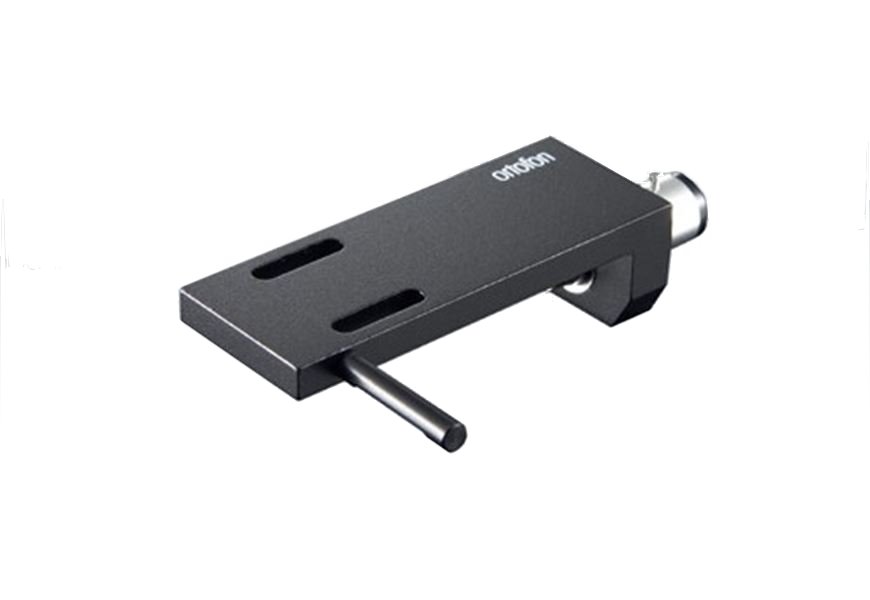
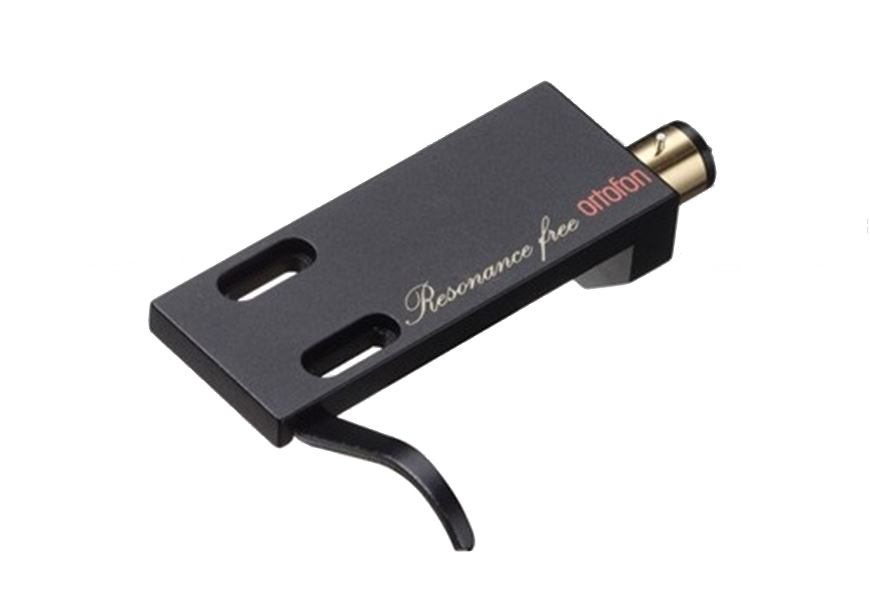
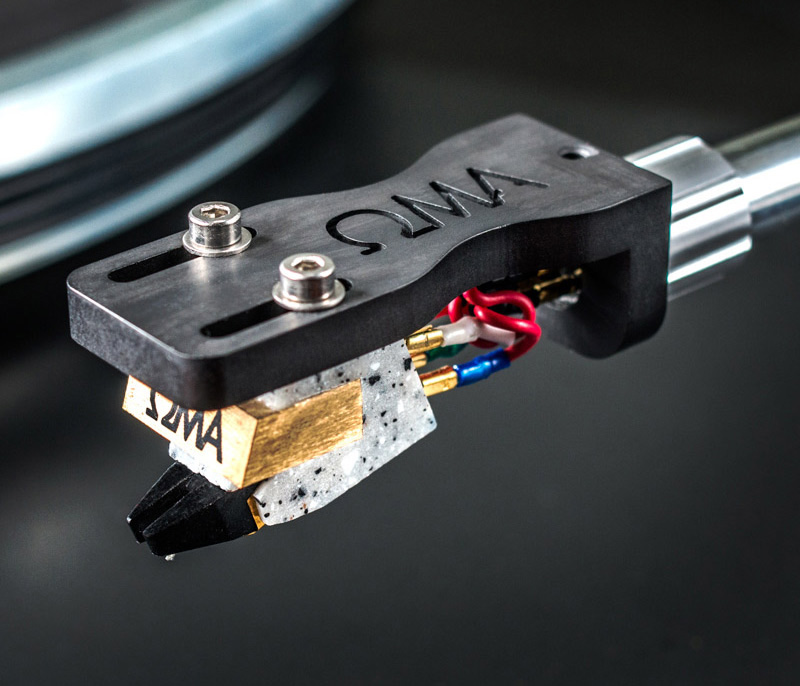
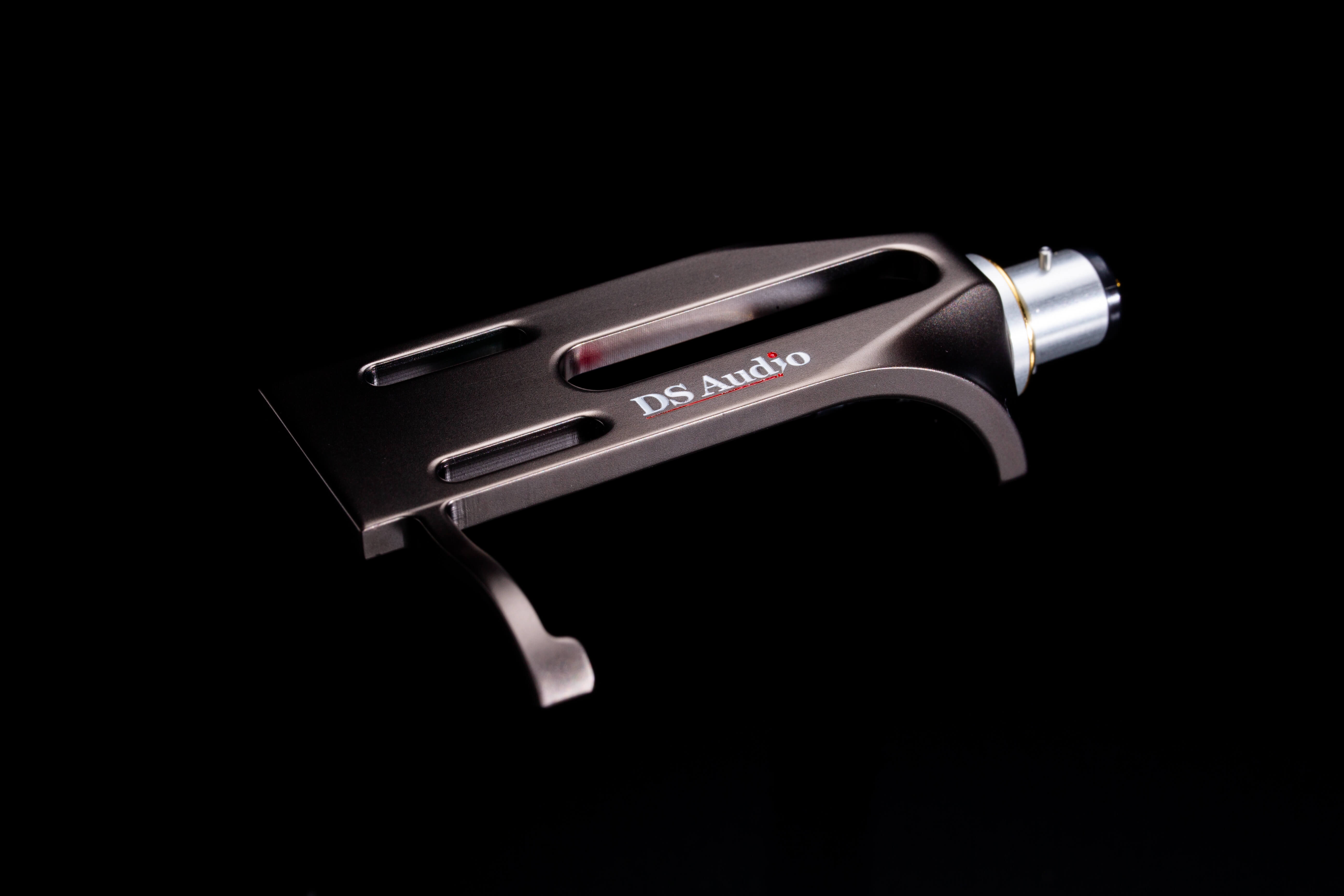
Tonearm Cables – Oh, my, is this ever a can of worms! Anyone who has been in the hobby knows that cables are indeed a critical part of the signal chain, but also realizes there are so many variables that there will never be one cable that satisfies all listeners. Indeed, many of use cables to “fine tune” the tonal balance or a system, or choose one brand/model over another based on specific qualities or characteristics they hear in their setup (which may not be as apparent or important in another system).
The cables I will list here are by no means a registry of all the good options available – there are many. What I will focus on are cables that we have found to be good performers here and that have found acceptance among many of our customers.
What we value here in a phono cable is one that doesn’t impart a significant amount of its own character (let’s call that a neutral tonal balance), off good overall resolution and is well shielded to prevent noise pickup (a mandatory property for a cable carrying the very low-level output from a phono cartridge).
The listing is presented in alphabetical order and does not represent preference.
- Audience Au24SX – A relatively new inclusion for us, the Au24SX cable is less system dependent than previous versions. In the past, we found the Audience phono cables were great in some systems, not a good match in others (which we term system dependent), with somewhat unpredictable results. The “SE” and now the “SX” versions are much more “system-friendly,” so to speak. 1M goes for $2162 in an RCA/RCA version, $2112 in DIN/RCA configuration. Call to Order
- Cardas Audio – Their selection of phono cables is broad, and each offers good value. Cardas Iridium is priced at $210 for 1M; the Clear Cygnus is $440 1M, Clear sells for $1145 in a 1M length and top-of-the-line Clear Beyond is $1850, 1M. These prices reflect RCA/RCA termination, and all include a ground wire. Cardas charges an addition $60 for a right-angle DIN. Call to Order
- Shunyata – Although well known for its superb power cables and line conditioners, Shunyata does not have the same level of name recognition when it comes to signal cables. That’s changing. We are very impressed with their current range of offerings and they gaining broad acceptance among our customers. 1M cables are: Venom $400, Delta is $1300, Alpha is priced at $2000, and the flagship Sigma (which uses some very exotic technology) is $4700. All Shunyata cables are hand-built, are cryogenically treated in-house and are run through a unique K-PIP process of pre-burn-in that dramatically reduces break-in time. Call to Order
- Wireworld – We’ve long been fans of Wireworld cables for their ability to perform at a high level in virtually any system and exceptional value for money. In terms of tonal balance, these cables are neither bright nor warm, making them a neutral partner for your system. Each model is available in RCA/RCA or straight DIN/RCA configuration, and a ground wire is included. In 1M lengths, the Solstice Series 8 is $200, Eclipse Series 8 is $400, Silver Eclipse Series 8 goes for $480, and Platinum Eclipse 8 is priced at $1100. Call to Order
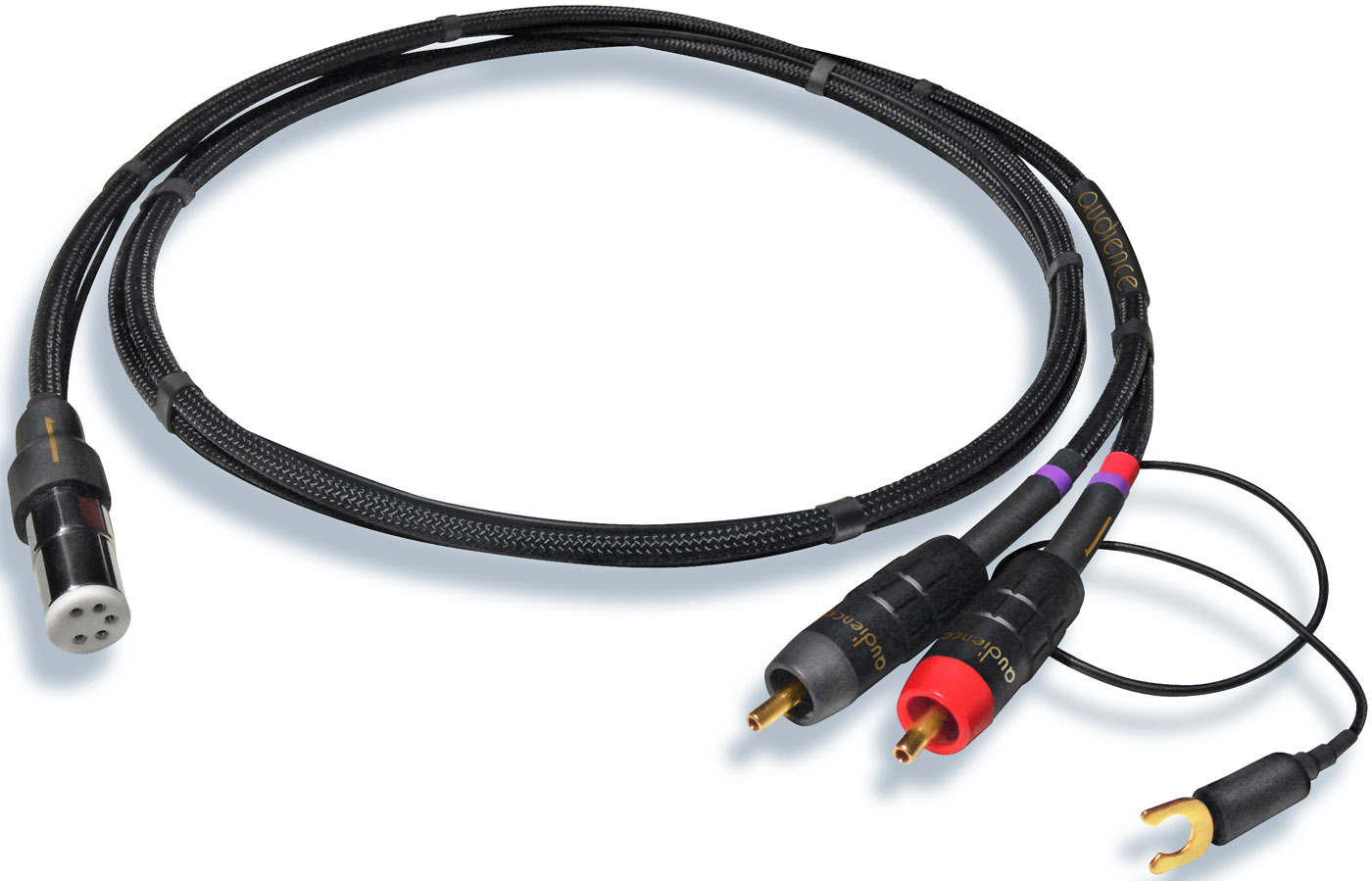
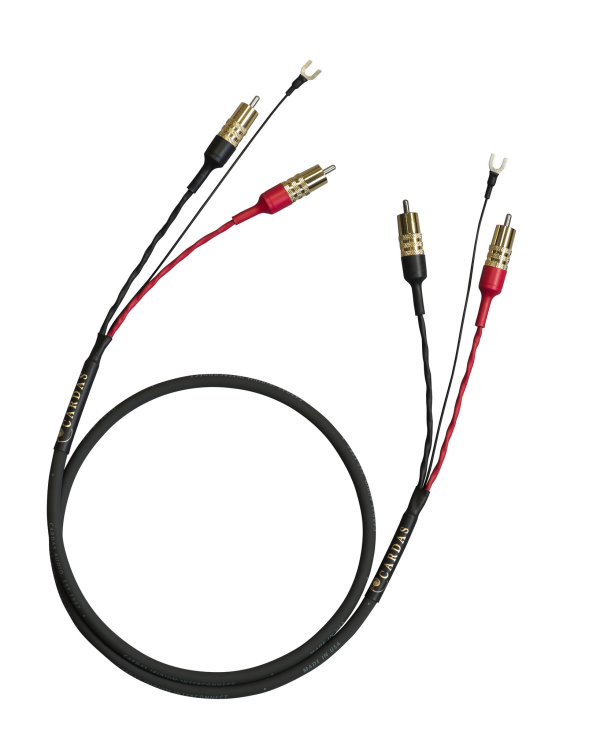
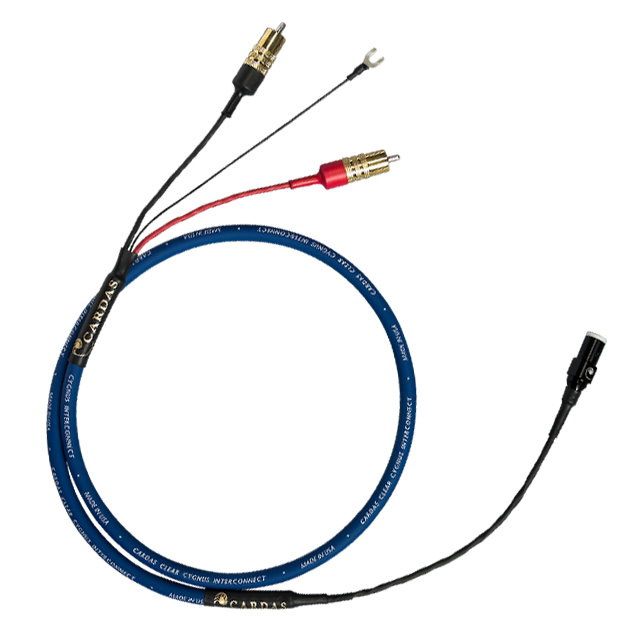
That’s a wrap, for now anyway. As new products emerge, we will be amending this text from time to time, so check back.
Lastly, please call us for help in assessing your particular system for our advice on finding the right product for your particular system.



